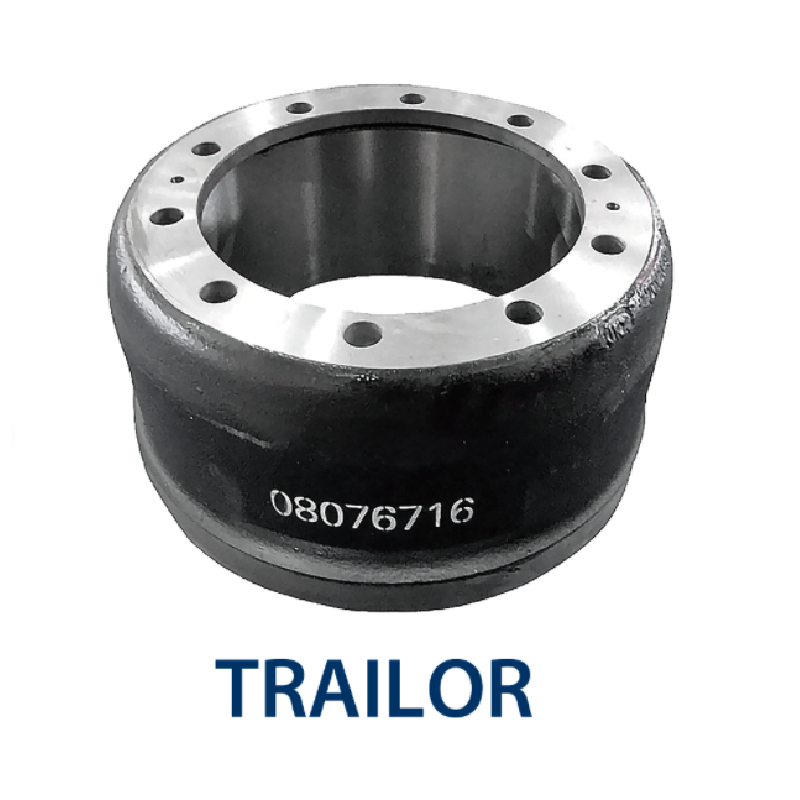Ago . 21, 2024 04:47 Back to list
Understanding the Causes and Solutions for Brake Drum Squeaking Issues
Understanding Brake Drum Squeak Causes, Symptoms, and Solutions
Brake squeaks can be an annoying aspect of vehicle maintenance, particularly when it comes to brake drum systems. A squeaking noise during braking can indicate a number of underlying issues that need addressing both for safety and for the longevity of the braking system.
Causes of Brake Drum Squeak
One of the primary causes of brake drum squeak is the presence of dust and debris. Over time, dirt and grime can accumulate in the brake drum assembly, causing friction that leads to the characteristic squeaking sound. This is especially common in vehicles that are frequently driven in dusty environments or are more often exposed to wet conditions, where road grime can build up more rapidly.
Another common culprit for brake drum noise is worn-out brake shoes. Brake shoes have a friction material that wears down over time. When this material becomes thin, it can lead to metal-on-metal contact, producing a high-pitched squeak during braking. Regular inspections can help spot wear early, preventing further damage.
In addition to dirt and wear, moisture can also contribute to brake squeak. When water collects in the brake drum, it can create a layer of rust on the drum surface. When the brakes are engaged, this rust can squeal against the brake shoes, leading to a noisy braking experience. This is often more pronounced in areas with high humidity or after a rainstorm.
Symptoms of Brake Drum Squeak
The most obvious symptom of brake drum issues is the squeaking sound itself. This sound can vary in intensity and can be more pronounced during certain driving conditions, such as when the vehicle is first driven after a period of inactivity. It's crucial for drivers to pay attention to these sounds, as they can indicate problems that may worsen over time.
brake drum squeak

Additionally, vibrations or a feeling of unsteadiness while braking can accompany the squeaking. If a driver notices that the vehicle takes longer to stop or the brake pedal feels spongy, these could indicate more serious issues within the braking system that require immediate attention.
Solutions for Brake Drum Squeak
Addressing brake drum squeak involves a combination of regular maintenance and responsive repair. The first step any driver should take is to ensure that regular inspections are conducted. A mechanic can inspect the brake drums and shoes, clean off any dirt and debris, and check for signs of wear that may require replacement.
If moisture is a recurring issue, maintaining dry brake components is essential. This may involve simply ensuring that the brakes are dry after washing the vehicle or using a more robust sealing compound if rust is observed. Additionally, applying anti-squeal shims can help dampen vibrations and prevent noise.
In cases where brake shoes have worn down significantly, replacement is inevitable. Upgrading to higher-quality brake shoes can also be beneficial, as many aftermarket options come with improved materials that resist wear and reduce squeaking.
Conclusion
While brake drum squeak can be a minor annoyance, it should never be dismissed as unimportant. Understanding the causes and symptoms can help vehicle owners take proactive measures in their vehicle maintenance. Recognizing that squeaking brakes signal potential issues encourages timely interventions, ultimately leading to safer driving experiences and extended brake system life. Regular inspections, appropriate cleaning, and replacement of worn parts are key to maintaining a smooth, quiet braking system. Remember, when in doubt, consult a professional mechanic to ensure that your vehicle remains safe on the road.
-
Brake Drum Man - High-Quality Drum Brake Drums & Brake Shoes for Reliable Performance
NewsJun.24,2025
-
High-Quality Brake Drum Kamaz – Durable Drum Brake Drum & Brake Shoe Replacement
NewsJun.10,2025
-
High-Quality Brake Drum Liza for Drum Brake Systems - Superior Durability and Performance
NewsJun.10,2025
-
High-Quality Brake Drum Kamaz – Durable Drum Brake Drum & Brake Shoe Solutions
NewsJun.10,2025
-
Durable Kamaz Brake Drums High-Performance Truck Parts
NewsJun.09,2025
-
Premium Brake Drum Maz Kit with Shoes Enhanced Braking
NewsJun.09,2025
